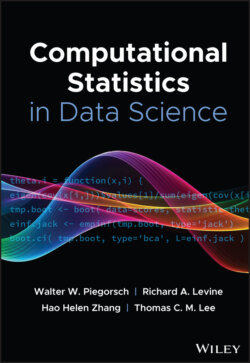Читать книгу Computational Statistics in Data Science - Группа авторов - Страница 58
3.13 Tableau®
ОглавлениеTableau stemmed from visualization research by Stanford University's computer science department in 1999. The Seattle‐based company was founded in 2003. Tableau advertises itself as a data exploration and visualization tool, not a statistical software per se. Tableau targets the business intelligence market primarily. However, Tableau provides a free, less powerful version for instruction.
Tableau is versatile and user‐friendly: providing MacOS and Windows versions while supporting web‐based apps on iOS and Android. Tableau connects seamlessly to SQL databases, spreadsheets, cloud apps, and flat files. The software appeals to nontechnical “business” users via its intuitive user interface but also allows “power users” to develop analytical solutions by connecting to an R server or installing TabPy to integrate Python scripts.
Tableau could corner the data visualization market with its easy‐to‐learn interface, yet intricate features. We contend that big data demands visualization as many traditional methods are not well suited for high‐dimensional, observational data. Based on its unique characteristics, Tableau will appeal broadly and could even emerge as a useful tool to supplement an R or Python user's toolkit.
